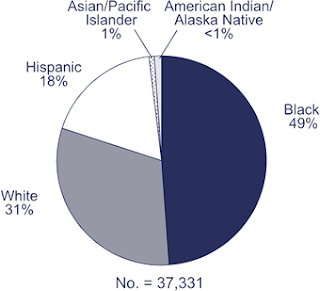Crime has an age as old as civilization itself. In this world, it is difficult to find a place where there is no crime. The only difference is the type and the method of crime. Several crime issues such as kidnapping, raping, murdering, drug trafficking, hijacking are rampant everywhere in the world. Crime rates and crime types are different in developed and undeveloped countries. Advancements in knowledge and technology allows people from developed countries to use the law, computer and internet to commit crimes in majority where as in the developing countries we can witness the direct crimes such as murder, kidnapping, raping, girl trafficking etc.
There are several reasons why the crime rate is increasing worldwide. Lack of education, greed, laziness, and poverty are the common reasons for the soaring crime rate. Still there are several other socio-economic issues needs to be dealt in the developing nations. Human rights have been a slogan for the developed countries only. Still there are people in this 21st century where they have no food to eat, clothes to wear and house to live. Education, equality in gender, and safety is way too far in these communities. Crimes are associated with several socio-economic issues such as poverty, illiteracy, unemployment, natural disasters, family and societal influence. A society is only safe, crime free and worth living when people have education, and can differentiate between good and bad. Utilitarian approaches, universalism approaches then slowly would develop as they become mature.
Obstacles in Crime Control:

- The laws: The laws itself is not strong enough in Nepal to control the crime. There are several faults in the law and people are taking advantage of that.
- Impunity: Crime rate would be controlled to some content it there was provision against impunity. Even the government officials are responsible for crime and get easily out of that. Due to impunity, people are encouraged to commit even more crime than before because they feel there is always someone to protect them.
- Inefficiency of Police: Police in Nepal is way too ineffective. It may be because of the absence of the proper training and modern techniques for the crime detection. One simple case takes years to resolve and people don't even have confidence of police officers. When people even don't believe the police where should they go for justice?
- Forensic techniques: Lack of advancement in forensic methods has certainly clouded the cause of crime and is unable to give the proper justification of the crime method.
- Slow Court Procedure: The inefficiency of court is the another reason for increasing crime rate. One case takes years to settle down.
- Lack of eduction:Lack of education in people is certainly a huge factor to consider because in this condition people cannot decide what is good and what is bad. A good speaker with evil intensions can easily drive these ignorant people by his impressive words and easily encourages them to commit a crime. The interesting thing here is the people who are doing this don't realize that they are committing a crime.
How Crime can be decreased?
I would like to present several ideas how the crime rate can be prevented in Nepal. Child care programs can be designed to improve the personality of the kids and give them the right knowledge about the good and bad things. "Free education programs to all" should be provided so that no child or person is deprived from the right of education. Family support programs can be designed to keep the family united and foster child care. New employment schemes would certainly help is reducing the crime rate in Nepal where there are thousands of unemployed people. New court procedures can be developed and expedite the court efficiency and restructuring of the constitution and law itself to make the straightforward laws eliminating the room for crime.
Criminal justice is the very big term still to be introduced in the poor country like Nepal. The direct services that deal with the crime such as police, prison, court, probation, parole should have specific programs to deal with crime. More focus should be given in increasing police efficiency, 24-7 security services, and advanced training for the crime detection. A society will be only safe and worth living when they eliminate the roots of crime. The ultimate programs to eliminate the roots of crime are education, good child care programs, and advancements in forensic science, laws against impunity, and relief funds in the natural disaster and restructuring of the constitution to increase police efficiency and expedite court service.





